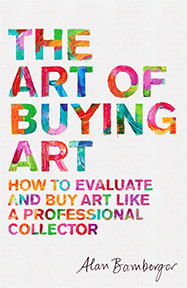Options for Insuring Art and Art Collections
by Carrie Van Brunt-Wiley
Maybe you collect art because you're an appreciator of the finer things in life, see art as a form of alternative investment, or perhaps you're a lifelong artist who enjoys the art of others. Whatever your reasons, having an art collection is a most rewarding experience. No matter what your aesthetic may be, it's possible to find artworks that express your unique personal tastes and preferences. Regardless of the type of art you own or your reasons for collecting it, whether for enjoyment or investment, your collection likely holds significant value. So is it properly insured, and more importantly, is it insured to its full value?
Home and Renter Insurance
You would hate for anything to happen to your collection, such as theft or a natural disaster. If a piece of your art were stolen or damaged, you'd lose both a personal and financial investment since art holds monetary as well as sentimental worth. In addition to keeping your art in a safe place, you can also look to your homeowners or renters insurance policy for additional protection.
Home insurance doesn't just include coverage for the structure of your residence; it also comes with protection for your personal belongings. While insurance can't replace a beloved painting, it can definitely protect your financial investment. The same goes for renters insurance policies.
Included in a standard home or renter's policy is "personal property coverage" which is the type of protection that can be applied to your collection. Most homeowners and renters have sufficient personal property coverage to protect their basic furnishings, however, if you collect art, you may not have enough coverage to fully insure your collection. This is because a standard policy usually only insures up to certain dollar amount for art that is lost or damaged in a covered peril (an incident covered by your policy).
If you are not sure what dollar amount your current policy covers your art, and under what specific incidents that coverage applies, read it carefully, or better yet, call your insurance agent and ask. Since the value of larger art collections often exceeds standard coverage amounts, you have to explore options for fully protecting everything that you own. To obtain the necessary additional coverage, you can either schedule an endorsement onto your existing policy or purchase a separate personal articles floater.
Scheduling an Endorsement
Scheduling an endorsement on your existing home or renter's policy means increasing the basic coverage limits for your art collection to a higher limit that will fully protect you. The upside to increasing coverage on your existing policy is that in the event of a claim, you can work with your carrier to settle your losses. While pricing for this type of policy will vary greatly depending on the collection, the annual cost of insuring art is generally less than 1% of its current market value.
Personal Articles Floater
Many collectors prefer to purchase a personal articles floater which is an entirely separate policy acquired specifically to protect their collections. It is not associated in any way with the existing home or renters insurance policy. The insurance carriers that sell these types of policies typically specialize in insuring art and collectibles, so they have a lot of experience working with collectors. Also, when you purchase a personal articles floater you typically have higher coverage limits for a greater number of perils (incidents that could result in loss or damage to the art). This type of coverage may cost a bit more, but is often preferred by more serious collectors.
Either way, you'll need an appraisal of your collection to determine its exact value. That document should include an explanation of how the appraisal was conducted, as well as price comparisons to pieces similar to those in your collection. It can also serve as an inventory of the collection. You may be asked to provide bills of sale (or copies of them) for certain works of art, the history of ownership of certain works, and even photographs of the individual works in the collection. As for pricing, you may qualify for a discount if you can show that you have a functioning security system protecting your home.
One other thing worth keeping in mind: The types of coverage discussed here apply to private collectors. Galleries, dealers or collectors who regularly buy art with the intent to sell it for a profit need business coverage. Artists also need business coverage.
Whatever your circumstances, don't leave your coverage up to chance. Get in touch with a licensed agent and ask about protecting you collection. While you might not be thrilled about spending the money to cover it, the additional investment will pay off in the long run in terms of the peace of mind knowing your artwork is protected.
***
Read more about art insurance here.
***
Carrie Van Brunt-Wiley is Editor of the HomeInsurance.com blog. She has been writing insurance news and consumer information for HomeInsurance.com since 2008. She graduated from the University of North Carolina in Wilmington in 2005 with a B.A. in Professional Writing and Journalism.
***

(art by Roy Fowler)

Current Features
- How to Buy Art on Instagram and Facebook
More and more people are buying more and more art online all the time, not only from artist websites or online stores, but perhaps even more so, on social media ... - Collect Art Like a Pro
In order to collect art intelligently, you have to master two basic skills. The first is being able to... - San Francisco Art Galleries >>


